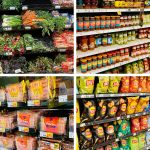How to build a stockpile for $10 a week. Prepared is better than being caught unaware. I firmly believe that everyone should have emergency supplies because we never know what the future will hold.
The number one reason I hear from not creating a stockpile is money or budgeting. Many feel they just don’t have the additional funds to create an emergency supply.
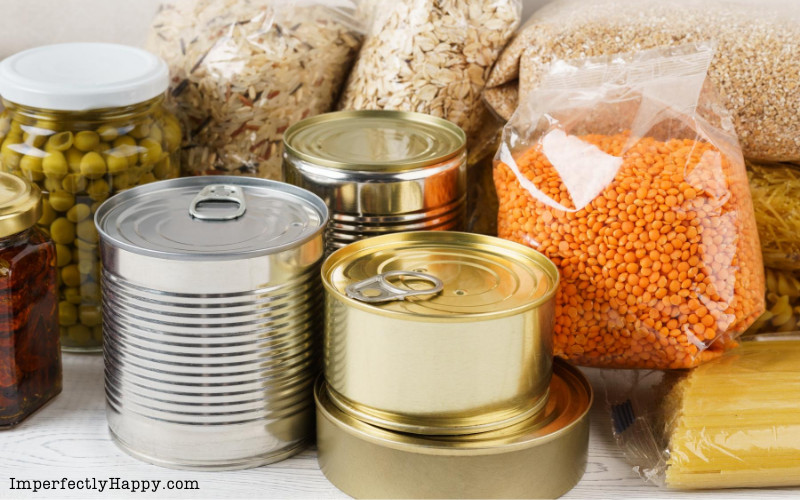
Build a Stockpile for $10 a Week
You might think that being prepared, stocking up is expensive. Stockpiling certainly can be costly but it does not have to be.
I’m going to show you how you can build a stockpile for $10 a week. That’s less than one trip to a fast food restaurant or a few cups of drive thru coffee!
You can give yourself the peace of mind that comes with stocking up. That is why I put together this guide on how to stockpile on a budget!
Shopping for Your Stockpile by Month
Some of the best sales happen by shopping cycles each month. Be sure to check out my stockpiling by month articles:
Stockpiling – Where to Shop
Knowing where to shop is perhaps the most important part of stocking up on a budget. First on your list should be those budget stores you most likely already shop in like the Dollar Tree, Big Lots, and Aldi.
Your town might even have a local store that sells canned foods at a discount. You have to be careful at these stores though, food there can sometimes be out of date or dented and you don’t want to buy those, no matter how cheap they are.
Also, be sure to check the prices in your local ethnic food stores. Often you will be able to find massive bags of rice in Asian food stores that you couldn’t get in your regular stores and they will be pretty cheap too.
Building Your Stockpile – What to Buy
When you’re working out what kind of foods to get it’s important to know what your family likes to eat and what they don’t. If your family doesn’t like split peas, there’s no sense in buying it.
Also, if your family LOVES pasta…make sure you get a lot of pasta. But, variety is important, even during a crisis moment. It helps keep morale up which is VERY important.
There is also a debate to be had of canned vs frozen when it comes to food. Pretty much any food you can buy canned you can buy frozen. But, not every frozen food you can buy can be found in a can. You should also consider how much freezer space you have.
For most people, this is the smallest storage area in the whole house. Also, it relies on electricity. How likely is it that something could happen that causes your power to go out? How long might your power be out if it does go out?
Frozen foods may be a bit healthier than canned foods, but they come with a lot of downsides as well.
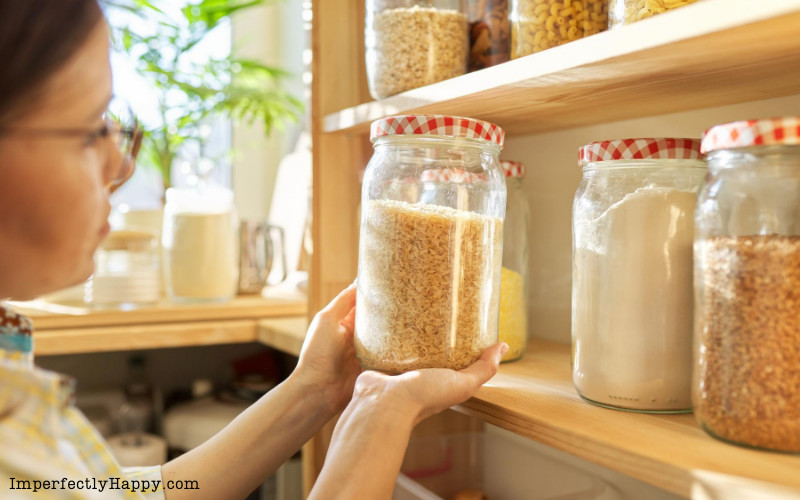
What to buy with your $10 each week:
Week 1: Rice or Pasta
Start off buying as much rice or pasta as you can with $10. If you’re shopping in Walmart then you’ll be looking at about 20 lbs. of rice (about 100 side servings)! You might find rice cheaper elsewhere so be sure to do some price comparison before you buy anything.
Week 2: Sauces
Grab some jars of pasta sauce, or even a giant bottle of soy sauce to go with your rice or pasta. With $10 you could grab a gallon of soy sauce. That’s a lot of soy.
Shop sales and you could also pick up 10 jars of pasta sauce. Alternatively, you could stock up on tomato paste or passata which is often even cheaper, though lack any herbs and flavor besides tomato.
Week 3: All-Purpose Flour
You never know when you are going to have to bake your own bread, bake a cake, or even make pancakes. A good all-purpose flour is great to have on hand. With $10 you should be able to get 30 to 40 pounds of flour.
Most recipes call for about one pound of flour per loaf of bread. Think about the number of people you’re feeding and keeping yourself full of bread for a long time to come.
You want to make sure that you store your flour in air-tight containers in a cool dark area (a refrigerator works!).
Week 4: Canned Fruits and Vegetables
Not only do fruits and vegetables add some variety in flavor, but they also have a lot of nutrients. I recommend starting with canned fruits and vegetables. Make sure that the veggies are low sodium and don’t have many ingredients. Also, try to buy fruit that is canned in its own juices, not in syrup.
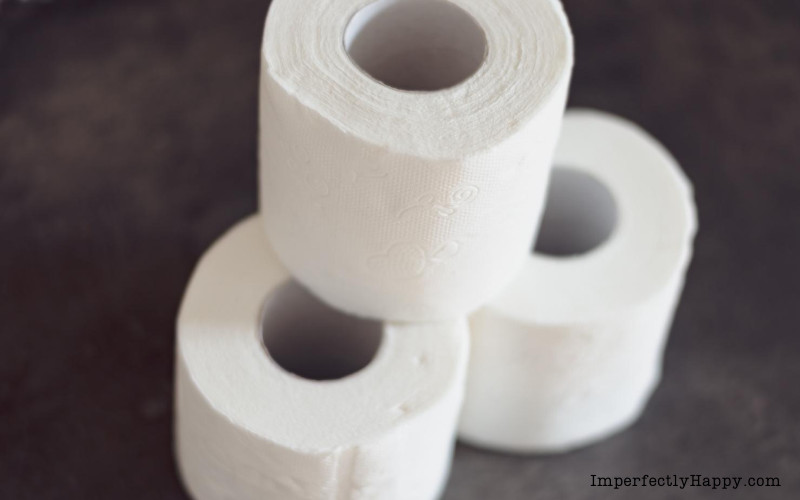
Week 5: Toilet Paper
Well if we didn’t learn anything else in 2020, we learned that getting your toilet paper is not a guarantee!
When you’re buying toilet paper you might be tempted to go with the absolute cheapest you can possibly find, but I actually recommend against that.
One of the reasons you’re preparing in advance is so you don’t have to suffer a decline in your quality of life. That being said, maybe take a single step down from your usual to save a bit of money, which will allow you to get a bit more. You might also want to check office supply stores as you might find a better deal on bulk toilet paper there.
Replacing Paper Towels in Your Home.
Week 6: Herbs and Spices
This is the time to buy stock cubes, salt, sugar. Things that will be used to flavor your food. Also, check which herbs you use most in your kitchen and then grab some of those the next time.
Week 7: Beans and Lentils
Beans and lentils are not only great sources of protein, but they’re also very filling. The cheapest way to buy them will be dry, but that will mean they need a little bit of extra work.
Black Beans, Pinto Beans, and Kidney Beans would be the ones that I would focus on first. They have the most versatility which means you can do more things with them. You might also consider Black Eyed Peas, Garbanzo Beans (chickpeas), and of course lentils.
I do recommend doing some canned beans as well as dry. Remember, to store those dry beans in an air tight contain, not the bags them come in. If you’re not familiar with cooking dry beans be sure to keep the instructions with the beans.

Week 8: Water and Drinks
Water is essential to life. You can only survive about 3 days without water. Now I’m assuming that most of your supplies are just for emergencies and not going off grid. But if your water gets turned off, you’re going to want to make sure you have AMPLE supply!
Is there a coffee lover in your house? Make sure you’ve got extra coffee! Other considerations would be electrolyte drinks and soda (if that’s our thing). Fruit and vegetable juices that are shelf stable can be a good investment as well.
Week 9: Meats
I would recommend starting with canned, prepared meats. Tuna and chicken are a great place to start.
In the future go with fresh whole chickens and ground beef. Cook them up and freeze them. You can use the bones from the whole chicken to make a broth which you can also freeze or can for later use.
You may want to invest in a good dehydrator and make jerky as well. Not to mention you can use this to dehydrate fruits and vegetables as well.
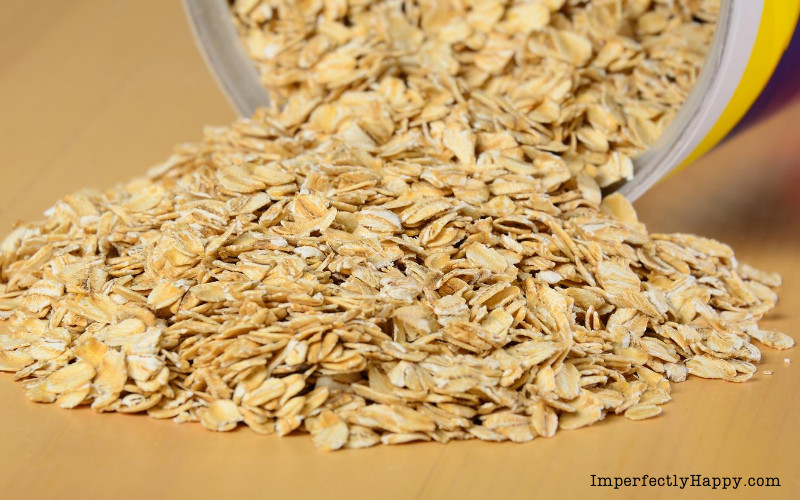
Week 10: Breakfast
Oats, honey, maple syrup, jam, and boxed cereals are all in this category.
I recommend leaning heavily into the oats your first time because they can be used in everything from meatloaf to cookies and they store incredibly well. You will want to get Steel Cut or Rolled Oats, not the instant kind.
Week 11: Baby, Pets or Special Needs
If you have a baby or pets then they are going to have separate needs so they need a week of their own. You won’t be able to get a whole lot for just $10, but that’s ok because as we keep cycling through the 11 weeks you’ll build your emergency supplies more and more.
If you have special medical or other needs this should be part of your week 11 or add a week 12.
Stockpiling Medication a Guide to Help You
Build a Stockpile on a Budget
Once you’ve finished all 11 weeks, it’s time to start back at week 1 and do it all over again.
Keep going through this 11-week cycle as long as you can. The longer you keep going, the better stocked you will be. Just remember that variety is key as you’re going through it all.
This is how you will give your family peace of mind and stockpile for $10 a week.


